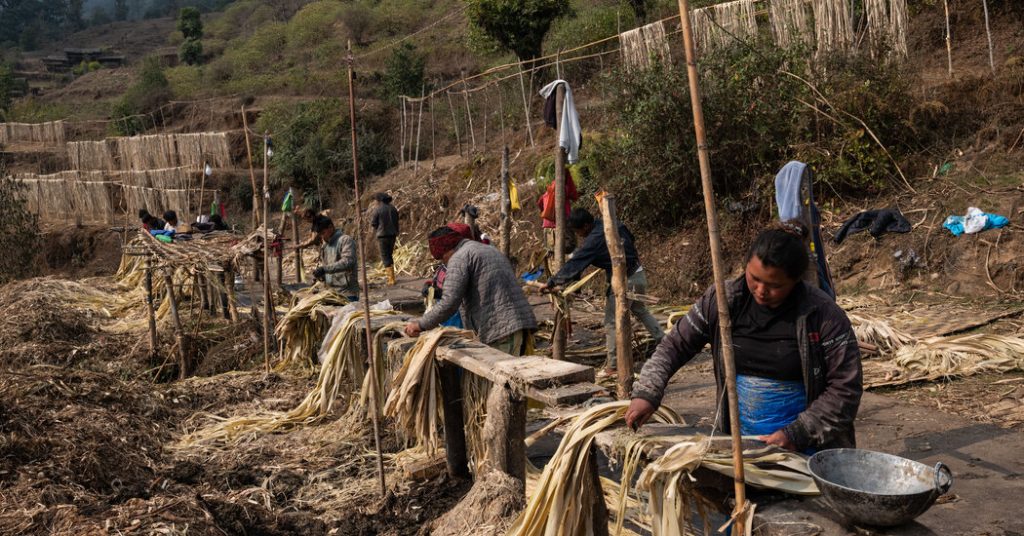In the eastern corner of Nepal, nestled between the world’s highest mountains and the tea estates of India’s Darjeeling district, life can be tough for farmers like Pasang Sherpa. His crops were destroyed by wild animals, leading him to switch to growing argeli, a plant with little perceived value. However, unbeknownst to him, the bark of the argeli plant would eventually become a lucrative commodity in a unique trade between one of the poorest regions in Asia and one of the richest – Japan. The bark from argeli is used by Kanpou Incorporated, a paper manufacturing company in Osaka, to produce the special paper used for printing Japan’s currency.
The scarcity of mitsumata, the traditional paper used for Japan’s banknotes, prompted Kanpou to explore the foothills of the Himalayas for alternative sources. They discovered that a hardier relative, argeli, was already growing wild in Nepal, and local farmers like Mr. Sherpa were encouraged to cultivate it for export to Japan. Through a process of trial and error, Nepali farmers learned to meet Japan’s demanding standards for the paper, resulting in a significant supply of mitsumata needed for printing yen banknotes. This trade has provided a new source of income for farmers in Nepal, like Mr. Sherpa, who now earn substantial profits from the bark of the argeli plant.
The partnership between Nepali farmers and Kanpou has not only transformed the economic landscape of the region but has also provided much-needed employment opportunities for local residents. Farmers who were previously contemplating migration to other countries for better job prospects have found a sustainable livelihood in cultivating argeli. This newfound source of income is not only benefitting farmers like Mr. Sherpa and Faud Bahadur Khadka but is also helping to stem the flow of Nepalis migrating to countries like the Gulf nations and India in search of work.
The production of mitsumata in Nepal has become a story of pride and success for both the Nepali farmers and Kanpou. The general manager of Kanpou’s Nepal arm, Hari Gopal Shreshta, expressed his pride in managing the raw materials used for printing the currency of wealthy countries like Japan. The collaboration between the two countries has not only strengthened economic ties but has also highlighted the importance of Nepali crops like argeli in sustaining the Japanese economy. The new banknotes made from paper sourced from Nepal are set to be released in Japan, marking a significant moment in the industry.
The unique relationship between Nepali farmers and Kanpou has had a far-reaching impact on both the economies of Nepal and Japan. The production of mitsumata in Nepal has helped to ensure a steady supply of the special paper required for printing Japan’s currency. The partnership has enabled Nepali farmers to earn substantial profits, contributing to the economic development of the region and providing much-needed employment opportunities. As Japan prepares to release its redesigned banknotes, made from paper sourced from Nepal, the significance of this trade partnership becomes more evident.
The story of Nepali farmers cultivating argeli and supplying mitsumata to Japan is a testament to the power of innovation and collaboration in the global economy. This trade partnership has not only transformed the lives of farmers in Nepal but has also strengthened the ties between the two countries. With the success of this endeavor, there is hope for further collaborations that benefit both nations and promote sustainable economic development in the region. The production of mitsumata in Nepal has created a new avenue for growth and prosperity, demonstrating the potential for transformative partnerships in the global marketplace.








